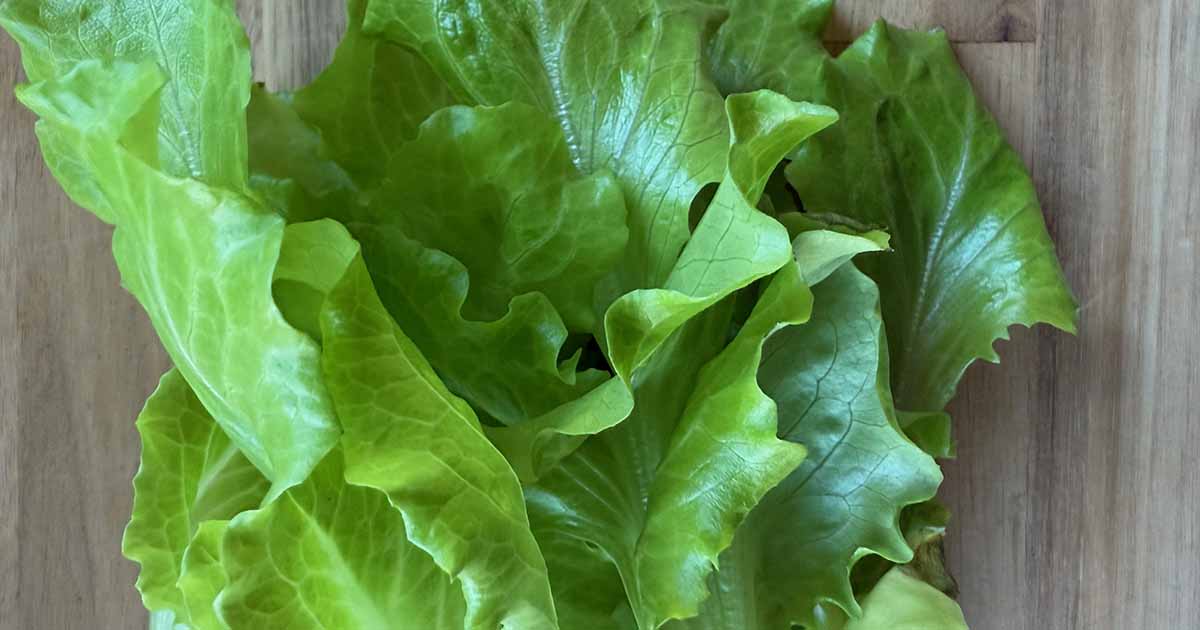Lactuca sativa ‘Nevada’
‘Nevada’ lettuce is named for a hot, dry state, which gives us a hint that this French crisp type withstands summer heat without bolting.
So whether you live in the hot desert or a more accommodating climate, you can enjoy this sweet head lettuce.


We link to vendors to help you find relevant products. If you buy from one of our links, we may earn a commission.
The apple-lime green, crunchy leaves have a crisp snap and a mild, nutty flavor in large, loose heads.
The glossy, thick leaves have a gorgeous ruffled shape with a crunch that is tempered by the smooth, buttery texture.
All types of lettuce are pretty easy to grow and ‘Nevada’ isn’t going to break with that tradition.
In fact, it’s easier to cultivate if you live in a hot region than many other types. If you’re ready to add ‘Nevada’ to your vegetable garden, let’s dig in!
Here’s what I’ll cover:
‘Nevada’ is a French crisp, summer crisp, or Batavian type. These types of lettuce originated in the 1600s in what is modern France, Belgium, and the Netherlands.
Since then, there have been hundreds of cultivars bred out of the original summer crisp.
Quick Look
Common name(s): Nevada lettuce
Plant type: Herbaceous annual vegetable
Hardiness (USDA Zone): 2-11
Native to: Mediterranean region
Bloom time / season: Spring and fall
Exposure: Full to partial sun
Soil type: Loose, rich, well-draining
Soil pH: 6.0-6.5, slightly acidic
Time to maturity: 55 days
Spacing: 9 inches
Planting depth: 1/8 inch (seeds)
Mature size: 9 inches wide x 12 inches high
Water Needs: Moderate
Taxonomy
Order: Asterales
Family: Asterales
Genus: Lactuca
Species: Sativa
Cultivars: Nevada
In the early 1900s, American growers started refining their own cultivars better adapted to local growing climates, including ‘Nevada.’
The thick leaves have a distinctly crisp crunch, with a buttery texture. ‘Nevada’ has large, open heads that resist tip burn and bolting.
How to Sow
Similar to all other lettuces, you have the option for starting the plants from seed or by purchasing seedlings.
From Seed
Start the seeds just before or right after the last predicted frost date in your region. Ideally, the soil should be about 40°F and not any colder when you sow the seeds.
You can also start them in the late summer about two months before the first predicted frost.


In fact, you can succession sow every two weeks throughout the growing season with a break during the hottest months if the temperatures climb above 85°F regularly.

